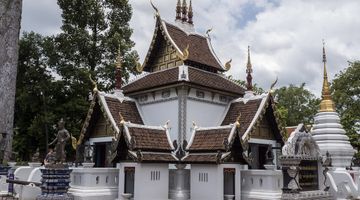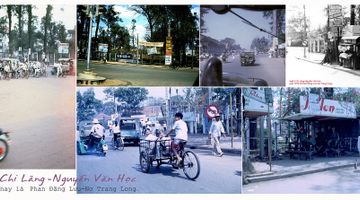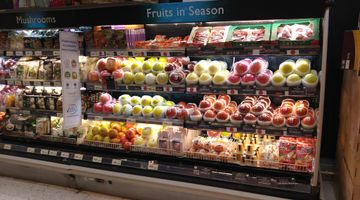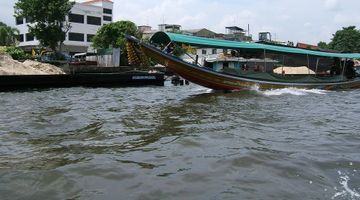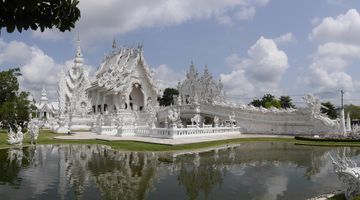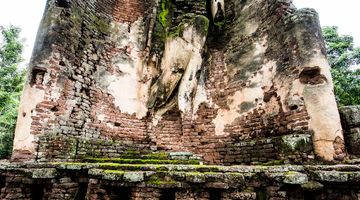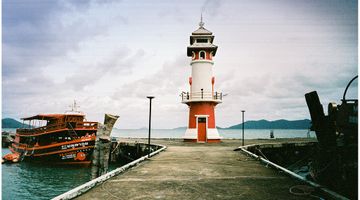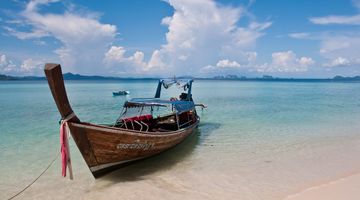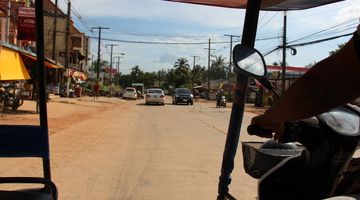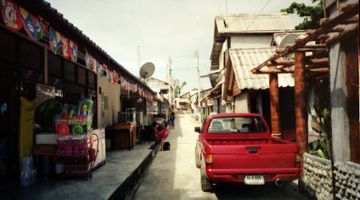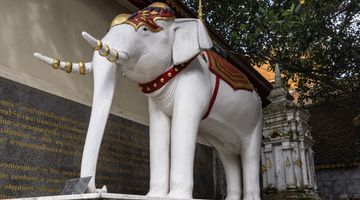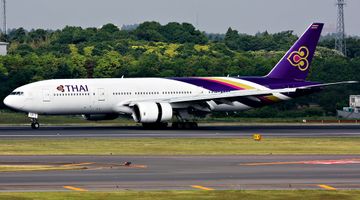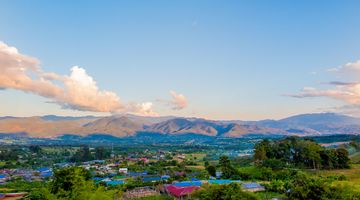Bangkok Thailand – The Ultimate Travel Guide
In a nutshell
A furious assault on all five senses and a tumultuous collision of old and new, Bangkok welcomes in its awestruck visitors with the famous toothy-smile of its locals and the promise of hidden gems behind the scorching concrete and looming skyscrapers.
Why go to Bangkok
The cacophonous of neon-lit lively streets with brazen erotic innuendos on every corner, paralyzing traffic jams, soaring multistory buildings and the humid, relentless heat disproves the old adage, ‘First impressions last’.
The capital city seduces its visitors with its stark multifaceted, contrasts and charm; and entices foreigners to see beyond the pollution and chaotic electricity wires. Snuggled shoulder to shoulder with the supersized skyscrapers and megamalls lies beautifully ornate temples with gleaming, golden Buddha statues, longtail boats cutting through canals along the colorful floating markets, bustling food stalls and immaculate palaces.
The streets are also filled with welcoming locals and saffron-robed monks giving guests first-hand experience with the genuineness of the world-famous Thai smile. Bangkok offers something special to every kind of traveler.
If the multi-layered city with its comprehensive culture, architecture and traditions isn’t reason enough to visit, then the food surely will be. The food on offer in Bangkok is as diverse as the city itself with local food, Asian food and international food all readily available on offer at all hours of the day and night. Whether you prefer dining with crystal glasses and linen napkins at one of the many rooftop restaurants, or whether you’re more inclined to slurp up Pad Thai from a polystyrene container while strolling through the city – Bangkok’s food scene has you covered.
When to go to Bangkok
The ideal time to pay homage to this pulsating city is during the cooler months from November until February. However, with its equatorial climate, Bangkok is a year-round destination with every season offering unique delights of its own. Peak season or tourist-invasion is from November through until March, with March to May being the hottest months of the year.
Where tp stay in Bangkok
While Bangkok offers a vast and endless assortment of accommodation options, the vibrant city can oftentimes be confusing for first-time visitors and knowing what area to stay in during your visit can be overwhelming.
The most popular districts for visitors are Sukhumvit, best known for its party scene and flamboyant nightlife; Siam, for shopaholics, families and travelers wanting easy access to other areas; Silom, best for travelers here on business; Pratunam, ideally suited for those who want cheap shopping, cheap accommodation and cheap restaurants; Riverside, popular with honeymooners and the wealthy. Lastly, Chinatown and Old City are very popular areas that are best suited to backpackers, sightseers and those on a budget. Old City also boasts the world-renowned Khao San Road, quoted as being “the center of the backpacking universe” and famous for its jam-packed clubs, bars and nightlife.
With Bangkok offering up some of the most exquisite hotels in the world as well as its ridiculously cheap backpacker options – the capital provides in abundance for every bank account and type of traveler.
Where to eat in Bangkok
The food in this city is unbelievably difficult to summarize with 24 letters and a keyboard and this is largely due to its staggering volume, its copious variety and its full-flavored dishes. The food on offer in Bangkok is sheer delight for foodies the world over. The food ranges from fine-dining opulence to finger-licking street food out of a plastic bag and it’s argued that there is no better dining destination in the world than Thailand’s sultry capital. Local, Asian and international fare can be found anywhere and everywhere across the city and best of all, the food in Bangkok is as cheap as it comes. From local snacks, sweet icy drinks, desserts and traditional Thai dishes of noodles, rice, salad and curries; almost all Thai food is a scrumptious fusion of the entire flavor spectrum. Sweet, spicy, sour and salty characterize the traditional dishes on offer and distinguish the local cuisine from the equally prevalent western options.
How to get around Bangkok
While Bangkok is notorious for its slow-crawling congested traffic, getting around the city via public transport is fortunately rather easy to manage. Traveling within Bangkok can be achieved by renting a car, the BTS Skytrain, the MRT (Metropolitan Rapid Transit), metered taxi or motorbike taxi, songthaew (a converted 4-wheel pickup truck where passengers sit on two benches), tuk-tuks for short distances and buses. Tourists can also be transported down the Chao Phraya River, with the most popular and best value for money being the Chao Phraya Express Boat, which is essentially a river-bus travelling leisurely up and down the river.
The BTS Skytrain has two lines (light green and dark green), is best used for traveling downtown and is particularly handy when heading to Siam Square. The light green line moves down Sukhumvit Road, Siam Square and then connects to Phahonyothin Road, where it finishes at Mo Chit close to the popular Chatuchak Weekend Market. The dark green line on the other hand goes through Silom and both lines connect with each other at Siam where interchanging between the two is possible.
While the Skytrain is used more frequently by tourists than the MRT, the MRT runs through Silom, Sukumvit, Ratchadaphisek and around the Chatuchak Weekend Market in Phahonyothin. Passengers can interchange to the Skytrain at Si Lom, Sukumvit and Chatuchak Park stations.
Transport within Bangkok is cheap and mostly convenient with the metered taxis being a much better option than the ever-present tuk-tuks. Although these unique three-wheeled vehicles are an Asian novelty and offer tourists a quirky means of travelling short distances around the city, they are not really cost effective and air-conned taxis are usually better bang for your buck.
There is a wide network of buses plying the streets of Bangkok all day long. There are several types of public buses – from the cheapers old fan-only vehicles to modern air-con ones. It is sometimes difficult to figure out which bus you need, but if you do, you will be able to reach every hook and cranny within the capital. Another downside of using the publuc buses is that Bangkok is often traffic-jammed. And alas, you may have to spend hours stuck in the middle of slowly crawlling cars.
How to get to and from Bangkok
The best ways of getting into Bangkok is via plane, train or bus; and being the busy hub that it is, fortunately means that getting to and from the capital is a relatively straightforward and easy endeavor no matter what mode of transport you commit to.
By air
If arriving or departing via air, the first thing you’ll need to understand is that Bangkok has two airports.
Suvarnabhumi, more commonly known as BKK, is the airport that is used for long-haul international flights as well as for domestic flights with THAI and Bangkok Airways. Visitors flying in or to Europe, South Africa or North America will arrive and depart from here.
Further north, is the older Don Mueang Airport (DMK) and is used by low-cost carriers such as Air Asia or Nok Air. Both BKK and DMK offer free shuttle buses between the two airports.
By train
For travels arriving or leaving Bangkok via train will most likely arrive or depart from Hua Lamphong Station in downtown Bangkok. However, for those want to journey out of North Bangkok or are heading to Kanchanaburi, you’ll most likely use one Bangkok’s smaller railway stations. Serving over 130 trains each day as well as around 60, 0000 passengers, Hualamphong station is massive and unbelievably busy with more than 20 platforms and 26 ticket booths.
Arriving in Bangkok or departing the capital from anywhere in the country is an easy and stress-free task.
If you want to travel from Bangkok internationally to Malaysia or Singapore via train, you will need to travel from Bangkok to Padang Besar first. Fortunately traveling this almost 1000 km route via train can be done in a comfortable overnight sleeper train which arrives tp Padang Besar in the early hours of the next morning. Tickets can be purchased online and will cost between TBH 850 to around TBH 2000 per ticket depending on the class of the seat bought. The travel time is roughly 18 hours with passengers departing from Hua Lamphong Station. Trains 171, 35, 37, 169 and 41 ply this route at various times daily; namely, 1pm, 2:45pm, 3:10pm, 3:35 and 10:50pm.
By bus & minibus
Arriving in and leaving Bangkok for another province within Thailand is also possible via a bus or minibus.
Buses departing from Bangkok will use one of the three public bus terminals. The busiest of the three terminals is the Northern Bus Terminal, commonly known as Morchit 2 situated at 2 Kamphaeng Phet Road. This station plies routes between the Isaan region in northeast Thailand, Northen Thailand as well as Pattaya, Rayong, Chanthaburi and Trat.
The second station is the Eastern Bus Terminal or Ekkamai which lies next door to Ekkamai BTS station in Sukhumvit and is the smallest and arguably best located of the three stations. This station offers departures to Eastern Thailand and even trips to Laos and Cambodia.
Lastly, there’s the Southern Bus Terminal or Sai Tai Mai, which serves all destinations to Southern Thailand (Hat Yai, Krabi, Koh Samui, Phuket, Krabi, Surat Thani) and Western Thailand (Nakhon Pathom and Kanchanaburi).
Is Bangkok a safe place to visit?
Staying safe in the big, busy capital is paramount and while relatively safe for travellers, being cautious in Bangkok is essential.
Be wary of dangerous and reckless driving by motorbike taxis or the scams of unmetered taxis.
Tuk-tuk scams are also unfortunately a common occurrence where prices will be as little as TBH 10 but drivers will take you to endless ‘gem’ and souvenir shops and become rather pushy in wanting you to buy their goodies.
Lastly be wary of getting ripped off or robbed in one of the many notorious go-go bars and don’t drink any offered drinks.
The level of healthcare in Bangkok is high, so if in need of any medical assistance be sure you are in good hands. There are many hospitals throughout Bangkok meeting international standards though prices can be steep – make sure you have a valid travel insurance.



